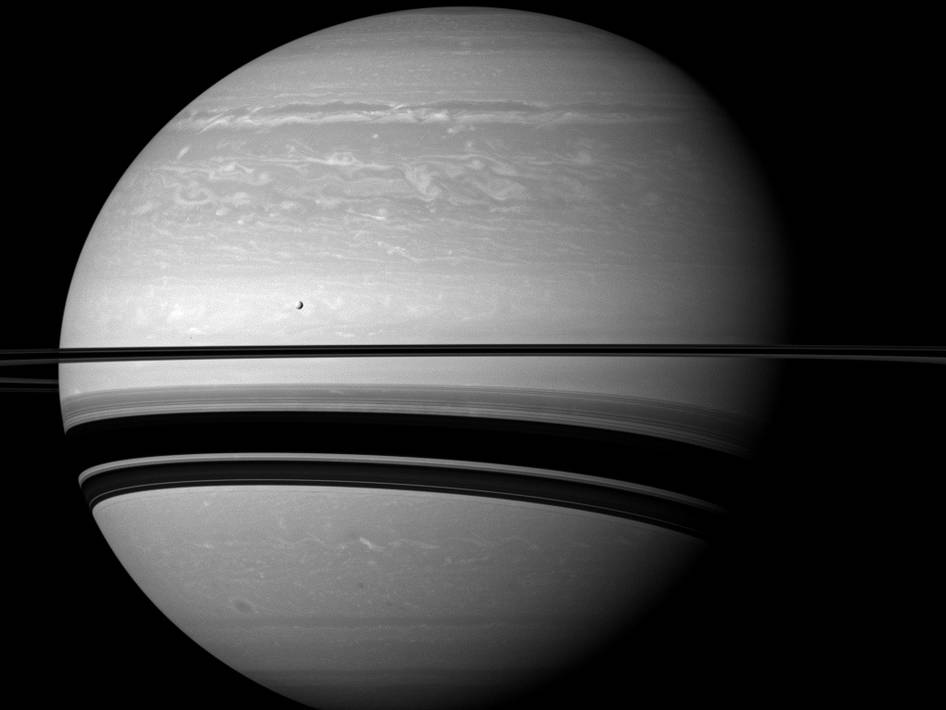Even in a peaceful looking scene such as this one of Saturn and its moon Tethys, the Cassini spacecraft reveals clues about how Saturn is ever-changing. Saturn’s northern hemisphere still shows the scars of the huge storm that raged through much of 2011 (see PIA14905). And, day by day, the shadows cast by the rings on the planet’s southern hemisphere are growing wider as the seasons progress toward northern summer. See PIA11667 and PIA09793 to learn about the changing seasons and the shadows cast by the rings.
Tethys (660 miles, or 1,062 kilometers across) appears above the rings to the left of the center of the image.
The image was taken with the Cassini spacecraft wide-angle camera on Jan. 10, 2012 using a spectral filter sensitive to wavelengths of near-infrared light centered at 752 nanometers. The view was obtained at a distance of approximately 1.4 million miles (2.3 million kilometers) from Saturn and at a Sun-Saturn-spacecraft, or phase, angle of 39 degrees. Image scale on Saturn is 84 miles (136 kilometers) per pixel.
The Cassini-Huygens mission is a cooperative project of NASA, the European Space Agency and the Italian Space Agency. The Jet Propulsion Laboratory, a division of the California Institute of Technology in Pasadena, manages the mission for NASA’s Science Mission Directorate, Washington, D.C. The Cassini orbiter and its two onboard cameras were designed, developed and assembled at JPL. The imaging operations center is based at the Space Science Institute in Boulder, Colo.Image Credit: NASA/JPL-Caltech/Space Science Institute





























